While inspecting the boards I noticed that at one time three clubs claimed this course as its home turf. The oldest, Oxford University GC, was formed in 1875. The course is terribly convenient for student golfers as the spires of the university are not much more than a few miles distant. However, several years ago Oxford GC moved to Huntercombe. Oxford City GC (1899) and Oxford Ladies GC (1901) make up the final two of the trio of centenary clubs. After some discussion with a few members I gleaned that Oxford is not a golf club in the traditional sense. It is rather more of a holding company which maintains the house and course. The two clubs appoint directors to the company to ensure all is well and their views are properly (and I suspect roughly equally) represented.
Golf was played in the area from as early as 1873. The original course was primarily located in the marshes below the hill on which the course is now located. At some point James Braid was involved in a redesign and then in the early 1920s HS Colt significantly re-worked the course. It is thought some of Braid's work remains, if true, likely in the form of few fairway corridors. However, it is safe to say Oxford can be attributed to Colt and it is a course he surely would have been proud to call his own.
The first two holes play down a left to right slope and are a gentle introduction to the round. However, both have greens which ride hard down the slope and it is easy to imagine three-putting. Approach to #2.
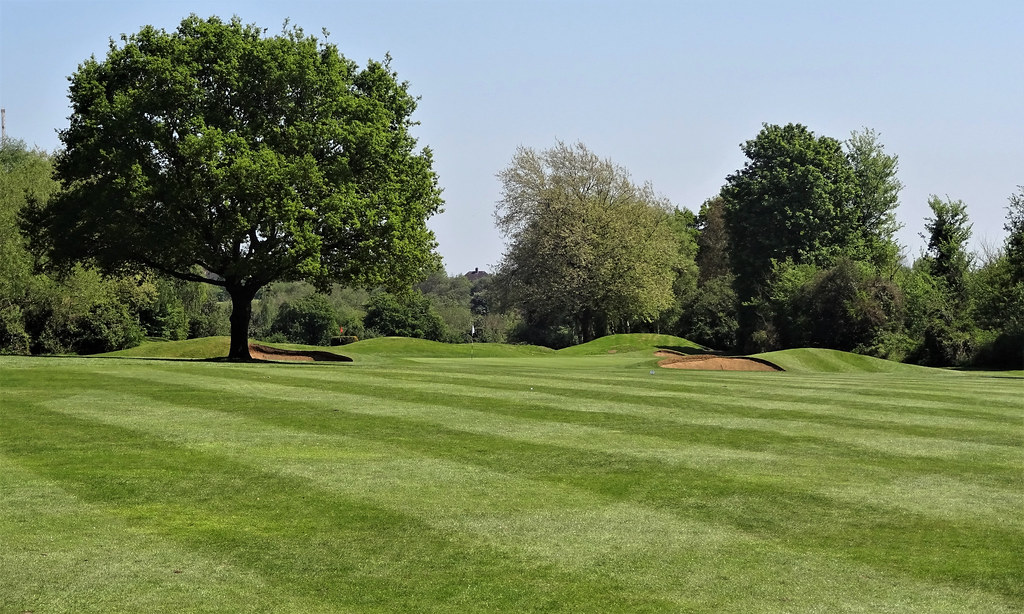
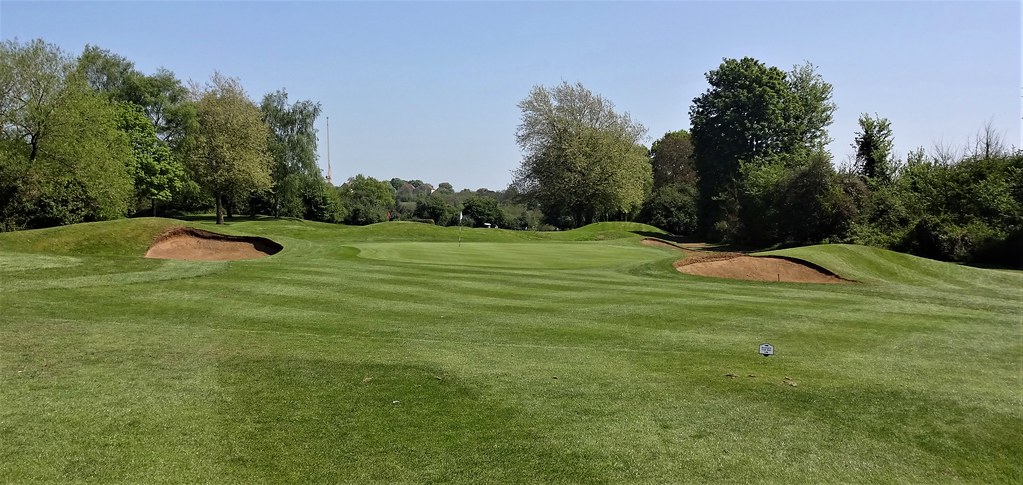
The difficulty increases dramatically on the 3rd. The water is reachable, but takes a very powerful drive to clear. It is glaringly apparent that trees are a serious problem at Oxford. On several holes lines of approach or tee shots are overly dictated. From personal experience, there were three shots from the middle of the fairway or the tee I couldn't hit - and it wasn't terribly windy. Speaking with an old-time resident of Oxford it is clear this wasn't the original intention. The hill was once a vast open landscape. The approach is to a very small target considering the steep bank that must first be negotiated. Looking back toward the tee.
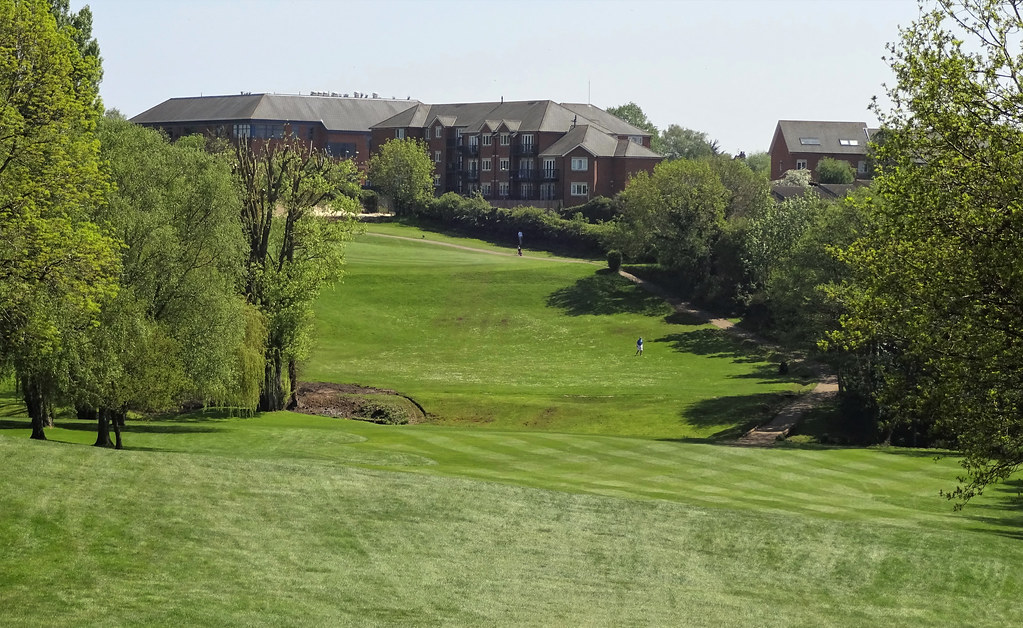
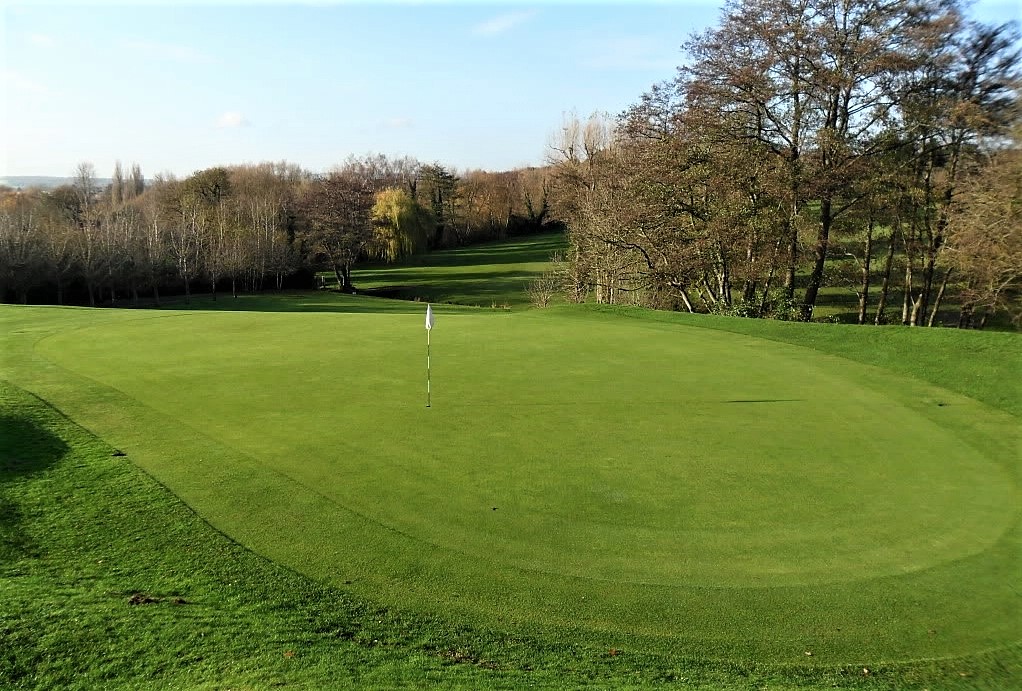
Oxford is blessed with a terrific set of par 3s the first of which is the 4th. From the 4th tee Magdalene College and Radcliffe Camera can just be seen across a long valley. Unfortunately, modern expansion has somewhat obscured the view, but it can hardly be surprising since the course is on the Cowley side of what can generally be considered the middle of the city. The hole heads in the same southeasterly direction as the previous three holes with the wind off the left. The putting surface leans deceptively to the right despite the high pad. Notice how the green is an extension of the ridge flowing into it from the left.
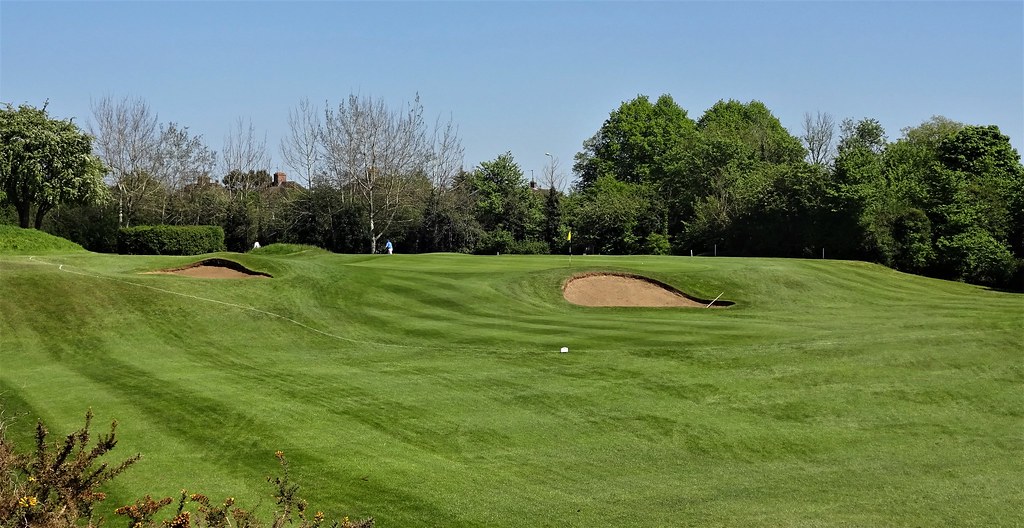
The following two holes run back and forth and are of a similar distance at just under 400 yards, but they play completely differently because of the lay of the land and the change of wind direction. Joy of joys, these bunkers were reinstituted since my last visit. Hopefully other bunkers will be restored, but it would require tree removal to do so.
In this instance, the bunkers work well in tandem with the sunken front of the green in making it difficult to ascertain just where the hole is.

A closer look at the green.
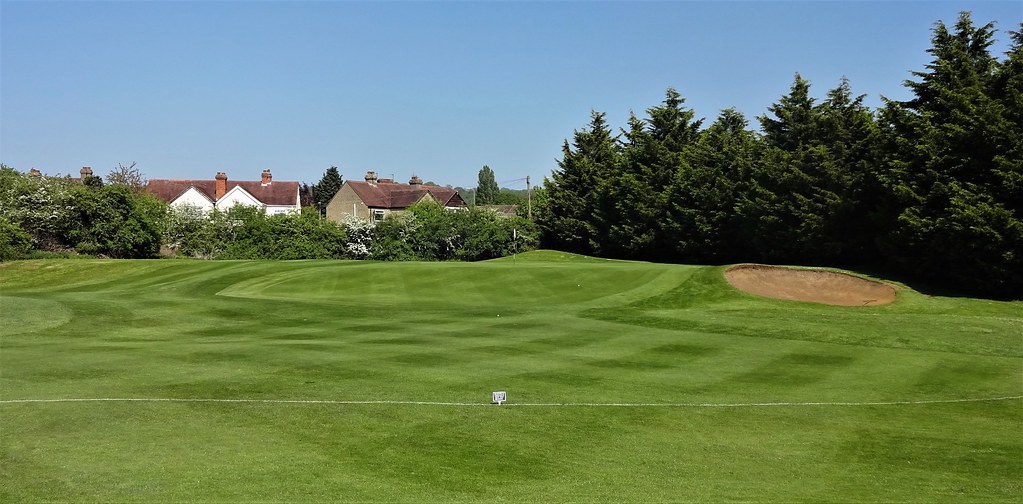
From the tee of the 6th it is hard to tell just how much of an elephant's graveyard the fairway is. Below is the approach. In retrospect, it may be best to lay back to about 150ish and avoid an approach from the dip. Most of the greens rely on sloping one way or another. In keeping with the rolling nature of the fairway, this green has more internal contours.
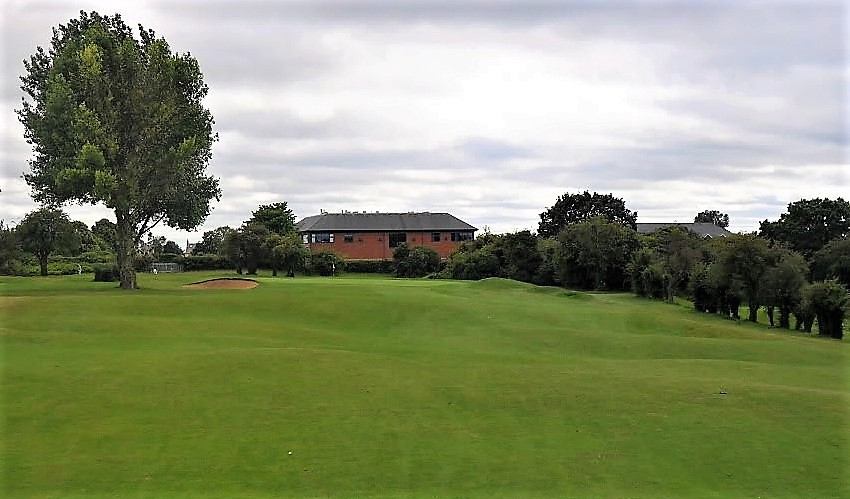
The next section of six holes is the weak point of Oxford. None of the best holes are in this stretch and we walk directly passed the 12th tee to reach the 7th....#7 transitions the game back to other side of the creek with a short par 4. There is an upper and lower tee to hit across the valley formed by the creek. While being considerably shorter from the lower tee I much preferred the look because the avenue of trees such as on #3 isn't quite so apparent. The uphill approach makes it difficult to gauge the deceptively long green. A visually curious hole, the 8th doesn't set well to my eye. I suspect this is not a Colt original and may have been built when a short hole between 5 green and 6 tee was taken out of play for reasons unknown to me. From the nature of the land one suspects the hole plays far longer than its listed 152 yards (praise be to daily tees). The centre bush too adds to the uncertainty though I am not sure if this is either positive or negative. An element I am sure adds nothing to the hole are the trees.
The purple patch had to eventually come to an end and it does with the back to back par 5s of nine and ten. While neither of these holes is poor, one can't help but get the impression they serve to eat up much of the least inspiring terrain. Still, the 10th green complex is vintage Colt despite the dreadful backdrop of trees.
Matters improve with the blind drive 11th which once again crosses the creek, but some of the best golf is yet to come. Well routed courses such as Ballybunion bring the golfer back to the prime golfing country on more than one occasion. Colt wasn't lucky enough to have the Atlantic Ocean as a near neighbour, but he was still able to route Oxford in such a manner as to revisit the dramatic ground near the creek numerous times on holes 3, 7, 10, 11, 12, 13, 17 & 18. Perhaps the most thrilling of these holes is the fairly long par 3 12th. The water is to the left and well below the hole which plays on a bluff shared with the 6th hole. However, the deep ravine cut by the water is the primary hazard.
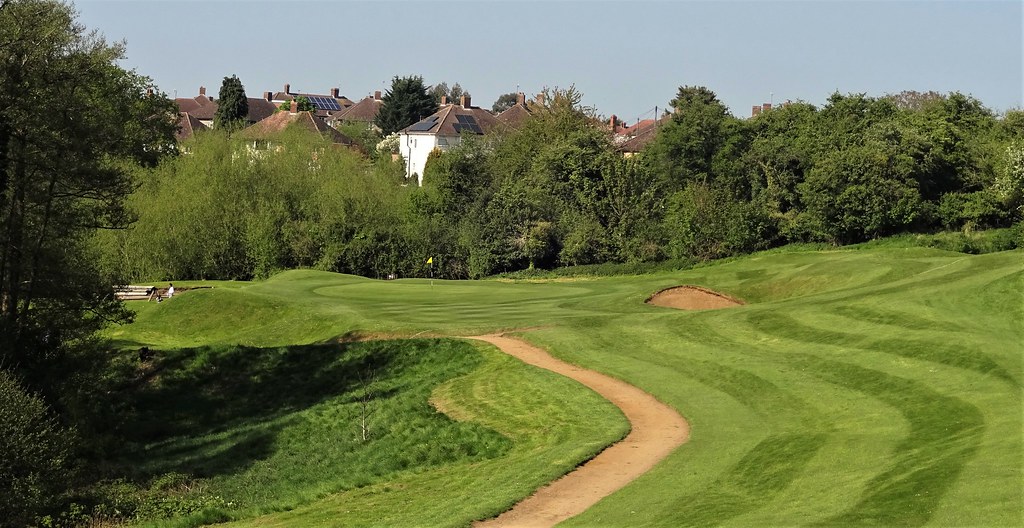
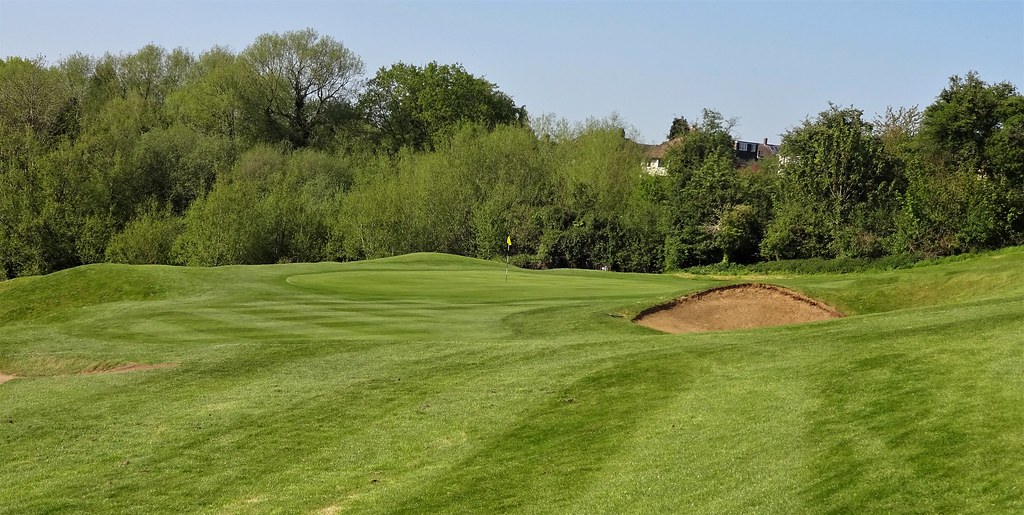
The 13th plays over Hogley Bog which is one of the better examples of a calcareous valley fen in southern England and has thus been deemed a Site Special Scientific Interest. One can readily see the choice off the tee to be bold right or safe left.
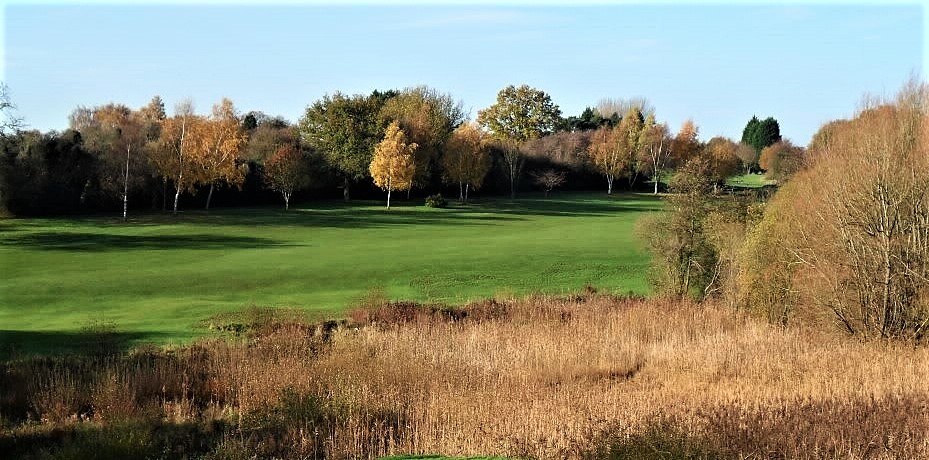
The approach off a sloping right lie complicates matters. Many of the greens have shrunk over the years. A closer look suggests this green at one time came much further out and created a more angled effect than what we see today. The front right bunker motif seems to be repeated too often and I suspect Colt is not entirely responsible. Still, this is a grand hole which is one of the many highlights of the course.
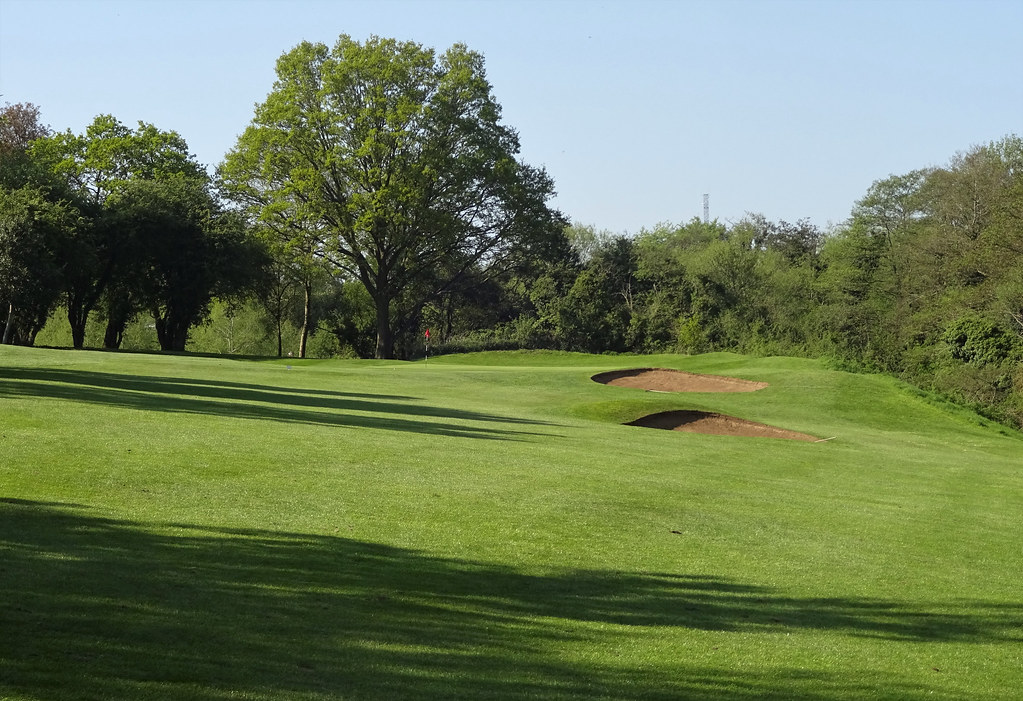
A dead straight par 4 with a raised green similar to many others on the course, the 14th is compromised by trees. The shaping of the hole provides for a dramatic effect which is mostly negated by trees. The green complex reveals just how much earth was moved in making this green and several others. Despite the trademark Colt framing mounds, one can readily see the similarity to Fowler's work at Beau Desert.

#15 is a lovely par 3 much in the same style as the previous hole, but this green is cleverly benched into the hill on the right.

The final par 4 can catch the golfer unaware with its demands. At 393 yards, uphill and with a sharp depression shy of the green, the 16th stands out as one of the best holes on the course. Recovery is no easy matter.
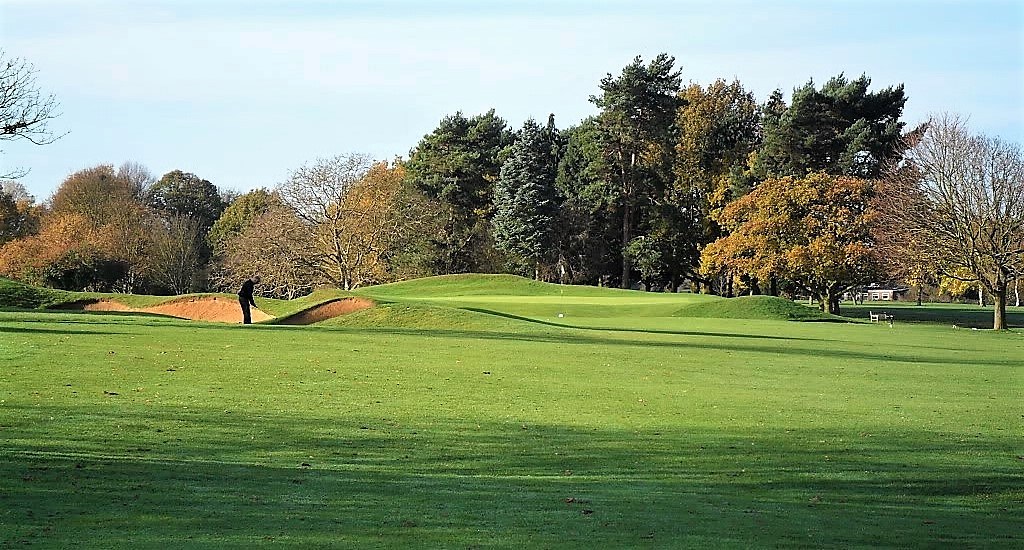
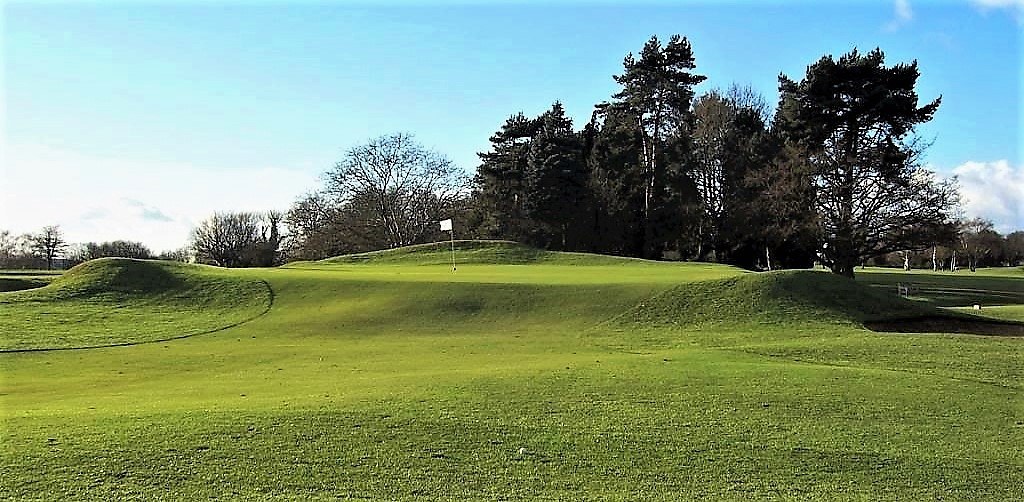
The penultimate hole traverses the creek bed (which presumably is underground or perhaps diverted some time ago) and is yet another superb example of using the terrain to full advantage. Perhaps the NHS had the fabled Pink City, Jaipur, in mind as its inspiration when building this section of the Park Hospital For Children! Luckily the hole is good enough to overcome the backdrop.
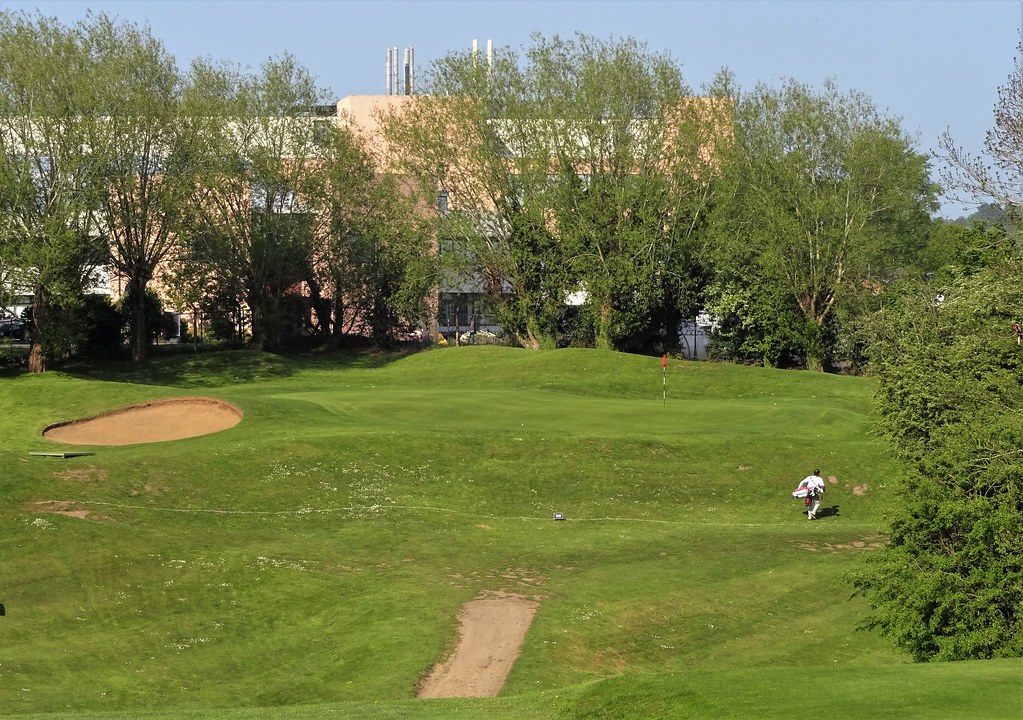
How the hole looked as Colt envisioned it.

The home hole is a reachable par 5 which was the best three-shotter on the property until the club added a pond near the green (shades of Camberley Heath!), but it still lacks the element of class which good long holes possess. Despite the less than ideal set of par 5s I am mildly impressed with the course as a whole. The cracking set of short holes and clutch of fantastic two-shotters more than make up for any deficiency Oxford may have. For sure, if trees, many trees, were removed, and the bunker scheme reconsidered, I believe the course could be greatly improved. The bones of an exceptional course are there. Its unfortunate that the club is moving in the opposite direction and is planting rather than removing trees. The turf is generally good, there is enough movement in the land to make golfers create shots, there are abundant natural hazards without being oppressive and the greens are in very good order. True, at just under 6000 yards from the daily tees Oxford is short on yardage, but increasingly I am finding more and more time for this sort of course. If one is making plans to visit or play golf near Oxford, and one should indeed make time to see this wonderful university city, Oxford is an ideal compliment to both Temple and Huntercombe. 2018
http://golfclubatlas.com/forum/index.php/topic,46177.0/ Reddish Vale
http://golfclubatlas.com/forum/index.php/topic,30965.0/ Beau Desert
http://golfclubatlas.com/forum/index.php/topic,32228.0/ Huntercombe
http://golfclubatlas.com/forum/index.php/topic,46538.0/ Coxmoor
Ciao